Our Numbered Days: The Evolution of the Area Code
Long-distance digits long ago shed their monetary worth, but they gained something else in its place: cultural value.
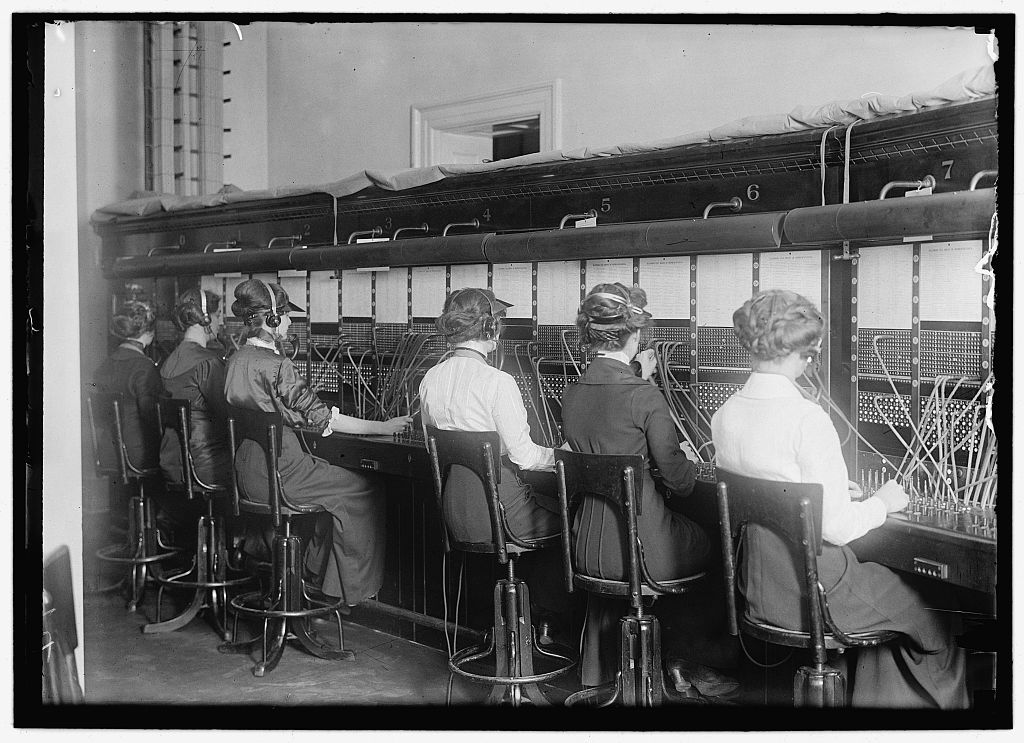
In the mid-20th century, in response to the United States’ rapidly expanding telephone network, executives at the Bell System introduced a new way of dialing the phone. Until then, for the most part, it was human operators—mostly women—who had directed calls to their destinations.
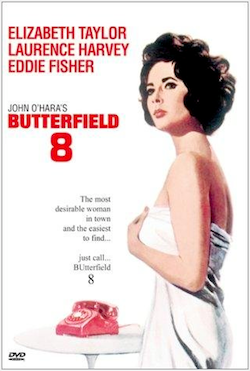
Dialing systems had reflected this reliance on the vocal cord. Phone numbers weren’t numbers; they were alphanumeric addresses, named after phone exchanges that encompassed particular geographic areas. The Elizabeth Taylor movie Butterfield 8 gets its name from that system: The Butterfield exchange served the tony establishments of Manhattan's Upper East Side. Lucy and Ricky Ricardo, should you have attempted to call their apartment, were apparently reachable with a request for "Murray Hill 5-9975."
That system evolved, slowly. In 1955, AT&T—after it researched ways to minimize misunderstandings when it came to spoken phone directions—distributed a list of recommended exchange names featuring standardized abbreviations. (Butterfield 8 would become, under that system, BU-8; Murray Hill 5-9975 would have been shortened to MU 5-9975.) But engineers at Bell had been conducting their own research into the scalability of the name-and-number system. They had ambitions to expand the national phone network; their own research had concluded, among other things, that the country could not supply enough working women to meet its growing demand for human operators.
Automation, Bell concluded, would be the future of telephony. And "All-Number Calling"—no names, anymore, just digits—would be the way to get there.
I want to tell you about the controversy the Bell System's embrace of numeracy provoked—how resentful some people became when their familiar method of making phone calls was taken from them. I want to tell you about why the change was necessary, and how it still informs our conception of phone calls and text messages. I want to tell you about the future of the phone number.
But first I want to tell you about the Central Coast of California.
You used to be able to access this sparkling little section of the country, over the phone, by dialing the 408 area code; in 1998, the area stretching south of San Jose, and on down the coast to King City, was split off. It all became, suddenly, 831.

I grew up in Carmel, smack in the middle of the new code region; my first cell phone number—the only cell phone number I have ever had—bears that 831 preface. I have held on to those three digits through happily-multiple changes of location (New Jersey, New York, Boston, Washington) and through unhappily-multiple losses of handset. The powers that be—hardware salespeople, cell service representatives—have, at one time or another, tried to force me into a 609 and a 917 and a 617; each time, I have resisted. Because I am not, fundamentally, a 609 or a 917 or a 617. I am not even, my current residence notwithstanding, a 202. I am an 831, wherever I may be in body, and will remain an 831 until they pry those three otherwise totally meaningless digits out of my cold, dead iPhone.
I am not alone in this. As MIT Technology Review’s Brian Bergstein told me:
Of course we didn’t know it at the time, but now it seems that the atomization of area codes was a prelude to the microtargeting that fuels political campaigns and advertising: it refined our perceptions of who people are. When I grew up in the San Fernando Valley, it and all the rest of L.A. was 213. You had to travel a long way to get out of 213, which might have subtly enforced the fallacy that L.A. was actually a coherent city rather than a mere patchwork. Sure, there were always ZIP codes to differentiate fancy neighborhoods from nondescript ones, but a phone number was and is part of an introduction—it’s a calling card in itself, not merely numbers on your actual calling card. You give people your phone number if you like them, not your ZIP code.
So when the Valley became 818 when I was a kid, suddenly the Valley’s separateness became more tangible to me. We weren’t all in it together any more. If you gave someone your phone number you instantly revealed yourself as an other to someone from 213, which covered the side of the city that was cooler than the Valley and its cheesy suburban sprawl. My grandparents lived in 213 and consequently they suddenly seemed more urban to me. Even that image is outdated, though, now that L.A. has even more area codes. My grandparents’ old place has shifted from 213 to 310. The associated vibe is more specific: it’s “West side” rather than “more urban, more interesting half of town.”
Area codes, of course, weren't always simply symbolic. When a "long-distance" call had a monetary value assigned to it, moving meant changing your phone number, almost by default: You couldn’t very well ask your new friends and acquaintances to pay long-distance fees each time they gave you a call. The rise of monthly cell service, with its flattening of the national phone grid, transformed the area code from an economic signal into a purely cultural one—and one that has the ever-more-rare virtue of connecting its owner to a physical place. You could liken an area code, now, to a sports team affiliation. Or to an alma mater. Or to an insistence that soda is properly known as "pop."
“It feels to me a little bit like a screen name,” says Philip Lapsley, the author of Exploding the Phone: The Untold Story of the Teenagers and Outlaws Who Hacked Ma Bell. Long ago divested of its original role, the three-digit code now functions as a kind of shared social media handle, a collective identity. It’s no longer something to be remembered—we have our phones for that—but is instead something to be talked about. I meet someone at a party. We exchange numbers. “Oh, 510!” I might say. “I was in Oakland a few weeks ago!”
“And 831!” the new acquaintance might reply. “I love the Aquarium!”
***
We'd owe that conversation, in some part, to the Bell System. And to the 10-digit coding system the telecom giant introduced to, and on behalf of, the American public half a century ago. Which brings us back to 1962.
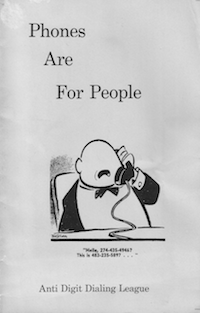
Bell had begun rolling out its numeric system, the North American Numbering Plan, a decade earlier. Recognizing that users of the phone system (as users of any technology are wont to do when transition comes along) would likely resist the change, the group did so slowly, and strategically. It built in long grace periods for people to accommodate themselves to the new numbers. It produced pamphlets methodically explaining the new system.
Still, people protested. In San Francisco, a group sprang up to battle Bell and its numbering scheme. The Anti-Digit Dialing League—consisting of thousands of members at its height, including the semanticist S.I. Hayakawa—decried Bell's version of digital transition. The all-digit dialing system was evidence of "the cult of technology,” the League argued, not to mention that cult’s "creeping numeralism." To make its point, the group published its own pamphlet—one that was aptly, if vaguely, titled Phones Are for People. "So far," it noted, "17 million of the nation's 77-million phones have lost their letters in favor of numbers. The time to reverse the trend is NOW."
The League’s concerns weren’t merely humanistic. The 10-digit codes Bell was proposing for its system, the collective feared, would also make numbers too difficult for people to remember, encouraging dialing mistakes. Pragmatically and morally, the argument went, All-Number Calling was wrong. One of the League’s members, invoking one of the nation's more patriotically named phone exchanges, got epic about it: "Give me Liberty,” he cried, “or take the blinking phone out."
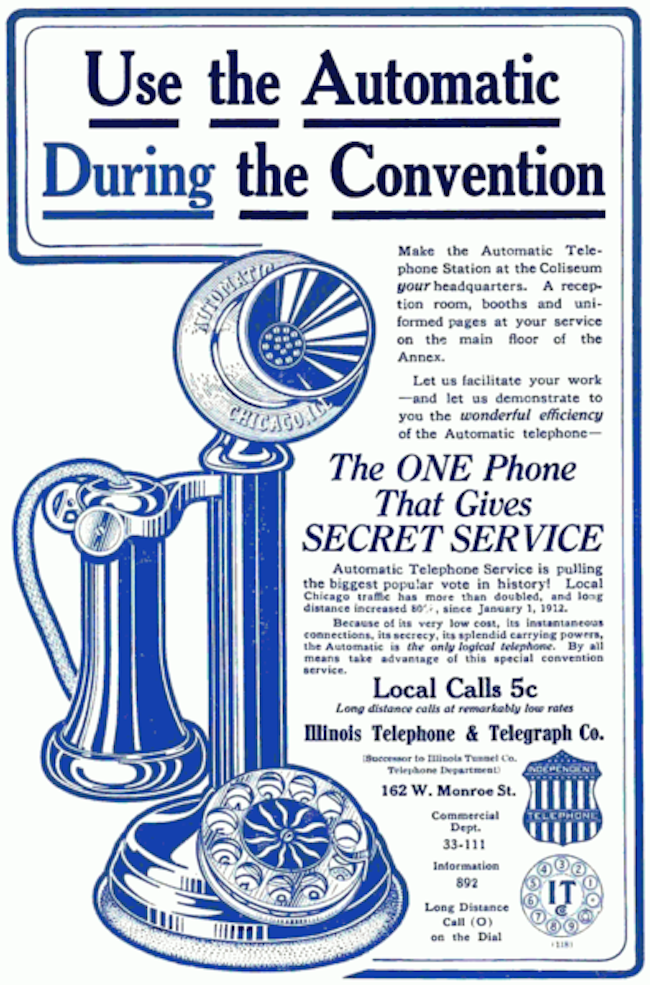
The League took to an extreme the anxiety many Americans felt at the changes that Bell, the behemoth corporate interest, was imposing on their behalf. As John Brooks put it in his book Telephone: The First Hundred Years,
All-Number Calling—it is clear in hindsight—stood in the minds of many for the age of the impersonal, when people live in huge apartment buildings, travel on eight-lane highways and identify themselves in many places—bank, job, income tax return, credit agency—by numbers.
Those concerns feel familiar today, as we continue to navigate well-worn anxieties that pit human labor against automated, and things that are named against things that are numbered. Individual privacy was a concern even in those early days of telephony—one common argument against human phone operators being that automation would make surveillance of phone calls less likely. People feared, too, that phones would replace in-person interaction, that the new technology would compromise that precious, precarious thing we shorthand as “humanity.”
They didn’t fear that enough to stop Ma Bell, though. The Anti-Digit Dialing League, under the legal counsel of “King of Torts” Melvin Belli, won a brief restraining order against the phone company. It lost, however, pretty much everything else. By 1964, the defenders of the named phone exchanges had abandoned their defense. The nation and its citizens would be, from then on, identified by numbers alone.
Another thing that seems clear in hindsight: The massive corporation, in this case, was correct. From the earliest years of the telephony, advocates had called for an automated system of dialing—not just for reasons of privacy, but also for reasons of practicality. Human operators may have added that friendly touch, but they were relatively inefficient; automated labor, it was clear, would scale much more readily than its human-conducted counterpart.
Some trace the advent of the telephone number itself—the numeric aspects of the old alpha-numeric exchange addresses—to a measles outbreak that struck Lowell, Massachusetts, in the late 1870s. The doctor Moses Greeley Parker, a friend of Alexander Graham Bell and an investor in his then-fledgling phone company, noted that, if the town’s four phone operators ended up quarantined in the epidemic, finding and training replacements would be an almost insurmountable challenge. The system needed to minimize its reliance, he argued, on the vagaries of human memory.
The North American Numbering Plan—the system of codes we still rely on, in augmented form, today—was a recognition of Parker's argument. It was also, like so many other utilities we rely on for our everyday infrastructure, a corporate creation.
Engineers at Bell Labs designed the numbering scheme beginning in the early 1940s and working into the next decade. They took advantage, in that, of a supremely rare and an even more supremely geeky opportunity: to design a system, from scratch, that would ensure a maximum amount of efficiency for a maximum number of phone users. The area codes that lead our own phone numbers today—212, 202, 415—were direct results of their work.
They were also based on a particular type of hardware: rotary phones. To use those phones, you placed a finger in the hole of the number you intended to dial, then rotated the dial clockwise until you hit the phone's finger stop. What this translated to, as far as the phone was concerned, was a series of clicks. Lower numbers on the phone, starting with 1, registered a lower number of clicks than the higher ones. What this translated to for the human user was less time required for dialing.
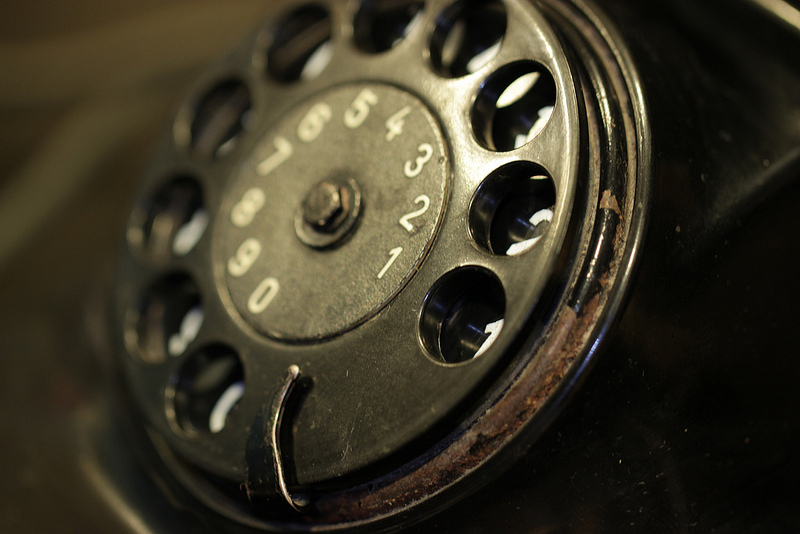
The system Bell's engineers devised married the hardware of the rotary phone to the machines that would provide the infrastructure for the nation's expanding phone network. Computers, back then, were primitive. To ensure that area codes would be recognizable to the computers that were to translate the codes into geographical areas, the engineers created a system that placed either a 1 or a 0 as the second digit in each area code. (Those with 0 in the middle indicated states with only one area code—hence DC’s 202 and Florida’s 305—while those with a 1 denoted states with multiple codes.) The system meant that those early computers would be able to distinguish between a long-distance area code and a local number. Which meant in turn that they could route calls across the nation, to regions of the network and finally to local networks.
When it came to creating the area codes for the country, the engineers also made their plans with maximum efficiencies in mind. New York, the most densely populated area of the nation, got 212—2-1-2 containing the lowest number of clicks possible on the rotary phone. Los Angeles got 213—the second-lowest—while Chicago got 312, and Detroit got 313. Anchorage, Alaska, on the other hand, got 907, which required 26 clicks from the person doing the dialing. To make the system even more efficient and human-confusion-proof, engineers also ensured that codes resembling each other (say, Oregon's 503 and Florida's 305) were distributed far apart from each other on the map.
The whole scheme “illustrates how smart the Bell engineers were back then,” Phil Lapsley points out. They were trying to design a system that was user-friendly—with the user, in this case, being the nation as a whole. They were also trying to design a system that would be, as much as possible, future-proof. There were, given the possible permutations of the rotary dial, 152 potential area codes. At first, only 86 of these were assigned. The engineers, in outfitting their new network, had given it room to grow.
The Bell System's new codes were first introduced to the public in the early 1950s, as part of a larger push toward automated, or Direct Distance, dialing. Bell, true to form—and recognizing the semi-audacity of its new numbering scheme—rolled them out in a way that will feel familiar to any current user of Facebook or Twitter: through beta testing. The company chose, as area codes’ introduction city, Englewood, N.J., which was conveniently located near Bell Labs and featured, as a bonus, switch equipment that was easily adapted to automation.
From there, it proceeded cautiously, and strategically. Once the company had chosen Englewood as its test city, it began a long public-education campaign in the area, explaining—through newspaper articles and pamphlets and movie shorts—how to use the new dialing system. "To reach a distance telephone," read a guide distributed in Englewood, "all you need do is first dial the Area Code, and then the desired telephone number. Be sure to enter the Area Code for distant points in the address book with the telephone number."
On November 10, 1951, the official rollout of area codes took place. With 100 guests watching, Englewood Mayor M. Leslie Denning dialed a number: 415-LA-3-9727. Exactly 17 seconds later, Denning’s call was picked up by Frank Osborn, the mayor of Alameda, California. Bell engineers called the cross-continental and intramayoral conversation a "historic first in communications." And newspapers, for their part, were even more jubilant about the proceedings. As The New York Times put it in an article announcing the Englewood test-call, “the vine-like network of this small community's telephone plant will grow tomorrow like an atomic age descendant of Jack the Giant Killer's beanstalk.”
***
As the network grew, it also became more complex. Splits and overlays of area codes, especially as the population of phone users grew in the 1980s and 1990s, became common. Lapsley points out that, when codes split—as 408 did in 1998, leading to 831—there can be resentment and even anger associated with the division. As the communications scholar James Katz told Gene Weingarten in 1998: "When we are assigned an area code we do not like, it feels like a loss of place or position in society. It is one means of alienation. We are losing our sense of place."
And those lucky few who get to keep their sense of place get to gloat about it. New York’s 212 (as opposed to 917 and 718) is now a sought-after commodity; so is 415 (versus 510 for the East Bay and 925 for the East-East Bay). Pitbull brags about being not just "Mr. Worldwide," but also "Mr. 305." Vermont’s 802 code, for its part, has become a kind of regional meme. “Someone asked me recently if it’s a pot reference,” one seller of 802-branded t-shirts noted.
So who has control over the numbering system today? That honor belongs, officially, to a 12-person team working out of an office in Sterling, Virginia: the current administrators of the North American Numbering Plan. For a brief period in the 1990s, it was Lockheed Martin that oversaw that administration; after Lockheed got involved with telecom concerns, however, the FCC decided that it needed a neutral and non-governmental body to administer the nation's numbers. Lockheed's numbering division divested itself and became Neustar, which remains under contract with the FCC.
John Manning is the Senior Director of NANPA at Neustar, overseeing the nation's numbering system on behalf of the FCC and the rest of us. He spends a lot of time thinking about phones and phone numbers. He also spends a lot of time thinking about the future of telephony—which includes, of course, the Internet. "The Internet offers up a lot of opportunities, but it also opens up a lot of issues that aren't necessarily there today," Manning told me. There are, for one thing, security concerns to think about—ensuring that numbers dialed over VOIP, for example, get properly routed to their intended destinations.
There are also resource concerns: As individuals, we're getting, what with Skype and Google Voice and their many equivalents, more and more phone numbers. And the 10-digit numbering system currently in use throughout the U.S., Canada, and U.S. territories is, Manning points out, "a finite resource." He doesn't see that deci-digital system changing anytime soon: Like the Bell employees of the last century, Manning appreciates the power of user habit when it comes to our technological infrastructure. NANPA, he points out, takes pains to make transitions like area code splits and overlays as seamless as possible for those affected by them.
At the same time, he recognizes that the Internet has changed how we communicate—with our voices and with so much else. So while the priority, he says, "is to keep the 10-digit numbering plan for as long as possible," it remains a question how long, exactly, that will remain possible. Some have speculated that the current numbering plan will remain sustainable only until 2038—at which point NANPA may need to add one or two digits to each phone number. The codes that have become so familiar to us—so meaningful to us—may change. Not completely, but a little bit. The history of commercial telephony, Manning points out—from those public switchboards to VOIP—has been "a continuum." Any changes made to the existing system, he says, are "going to include the numbers that we have today." They may simply be expanded versions of the plan that those Bell engineers laid out last century. As Manning puts it: "We have to make sure that we can continue the evolution."